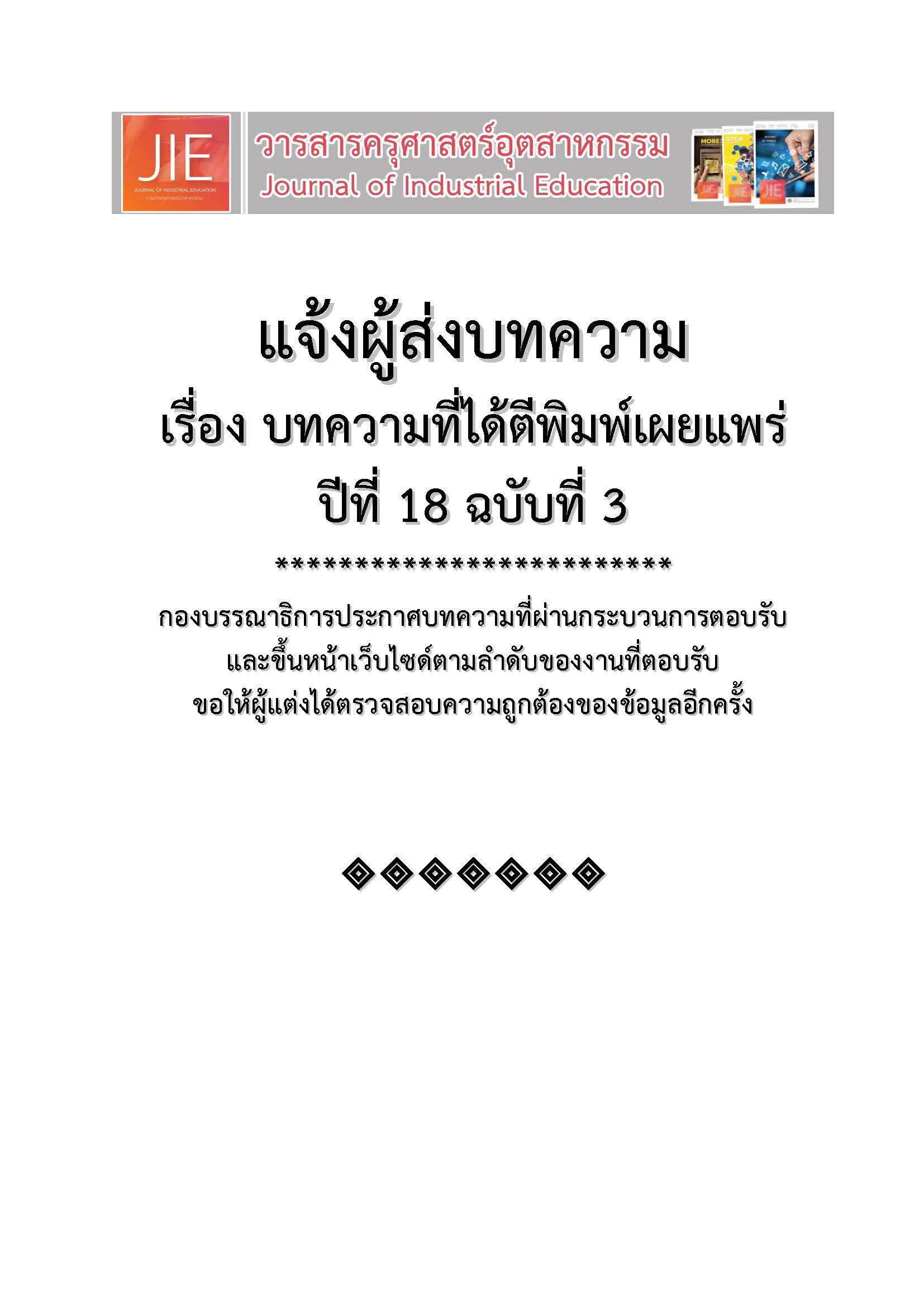STUDYING THE COMPONENT INFLUENCING ON THE ABILITY OF TECHNOGLOGY USING TO MANAGE THE PROBLEM OF LOGISPOST SERVICE BY POST OFFICES IN ARANYAPRATHET DISTRICT
Main Article Content
Abstract
The research was aimed to 1) study on the component influencing in the ability of technology using for managing the problem of logispost service by post offices in Aranyaprathet District, and 2) create the model on the ability of technology using for managing the problem of logispost service in order to study the examination of the competency of technology using via the problem management of logispost service on the further. The sample group was chosen using purposive sampling and consisted of 223 respondents from Aranyapraphet and Rong Kluea market branches. The tool for data collection was a questionnaire. The statistics for data analysis were frequencies, percentage, and factor analysis (Principle Component Analysis). The result showed that 1) customer responsiveness, customer service can be conceptualized as component influencing on the ability of technology using for managing the problem of logispost service by the post offices in Aranyaprathet District, and 2) author proposed that the ability of technology using is to manage the problem of logispost service in the name of “CRCS” Model for examining the competency of technology using via the problem management of logispost service.
Article Details
"The opinions and contents including the words in papers are responsibility by the authors."
"ข้อคิดเห็น เนื้อหา รวมทั้งการใช้ภาษาในบทความถือเป็นความรับผิดชอบของผู้เขียน"
References
Samaikul, M. 2014. Border Trade and Economic Development: Case Study of “Friendship Border Market Thai-Cambodia” Sakaeo Province. Academic Services Journal Prince of Songkla University, 25(1), p. 23-30.
Sirisomboonchai, S. and Pisitkasem, P. 2014. The Opinions of the Used in Logistics that Effect Transportation Cost. Journal of Finance, Investment, Marketing and Business Management, 4(3), p. 443–467.
Suksawaeng, A., Pataraarechachai, V. and Saekoo, A. 2006. Effects of Modern Logistics Management Strategy on Competitive Advantage of Food Industry Businesses in Thailand. Journal of Humanities and Social Sciences Mahasarakham University, 33(3), p. 22–31.
Prathong, Tunya, Pataraarechachai, Veeraya and Saekoo, Areerat. 2003. The Effect of Inventory Management Strategy on Competitive Advantage of the Textile Businesses in Thailand. Journal of Humanities and Social Sciences Mahasarakham University, 34(1), p. 92-102.
Artes, S. 2017. The Relationship between Strategies and Satisfaction and Trust in Using and Alphalt Transporter in Chonburi Province Service. Sripatum Chonburi Journal, 13(1), p. 166-172.
Thipsri, N, and Reawkarn, T. 2015. Logistics Management Strategy with Competitive Advantage in New Economy Era of OTOP Business in Chiang Rai Province. Sripatum Review, 15(2), p. 17-25.
Chareonsuk, S. 2012. Logistics Management for The Competitive Advantage: A Case Study of V-Serve Logistics Limited. HCU. Journal, 15(30), p.119-137.
Opasanon, S. 2019. Lessons Learned from A Government owned Logistics Company: The Express Transport Organization (ETO). Retrieved January 19, 2019, from http://www.ex-mba.buu.ac.th/webJGSC/Journal/Volume_3-1/44-60.pdf.
Panomyong, R. 2004. Logistics Management. Bangkok: Weladee.
Panayides, P., and Lun, V.Y.H. 2009. The Impact of Trust on Innovativeness and Supply Chain Performance. International Journal of Production Economics. 122(2009), p. 35–46.
Angsuchote, S., Wichitwanna, S. and Phinyophanuwat, R. 2008. Statistical Analysis for Social Science Research and Behavioral Sciences: Using LISREL Programs Techniques. Bangkok: Mission Media.
Khwanruthai R., Walailak A., and Nuttawut R. 2013. Delivery Efficiency of Just-in-time Production System for Automotive Part Suppliers Case Study: Siam Hi-Tech Steel Center Co., Ltd. Journal of Education Industrial, 12(3), p. 124-132.

